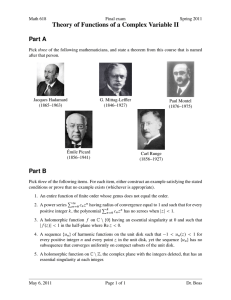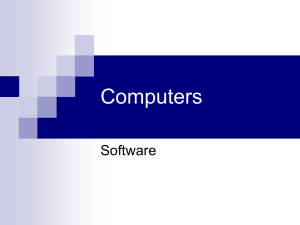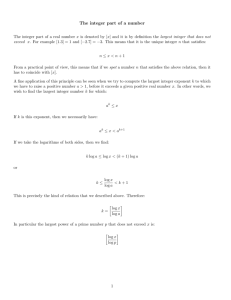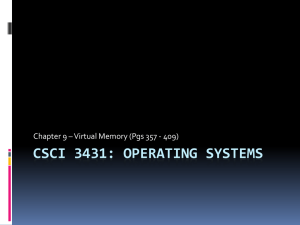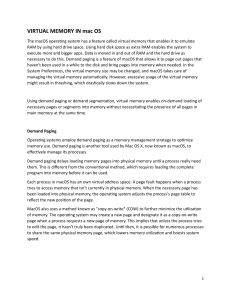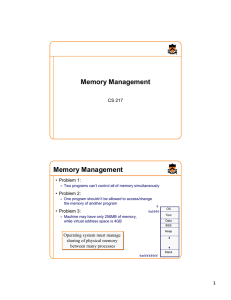Quiz 3 - Department of Computer Science
advertisement
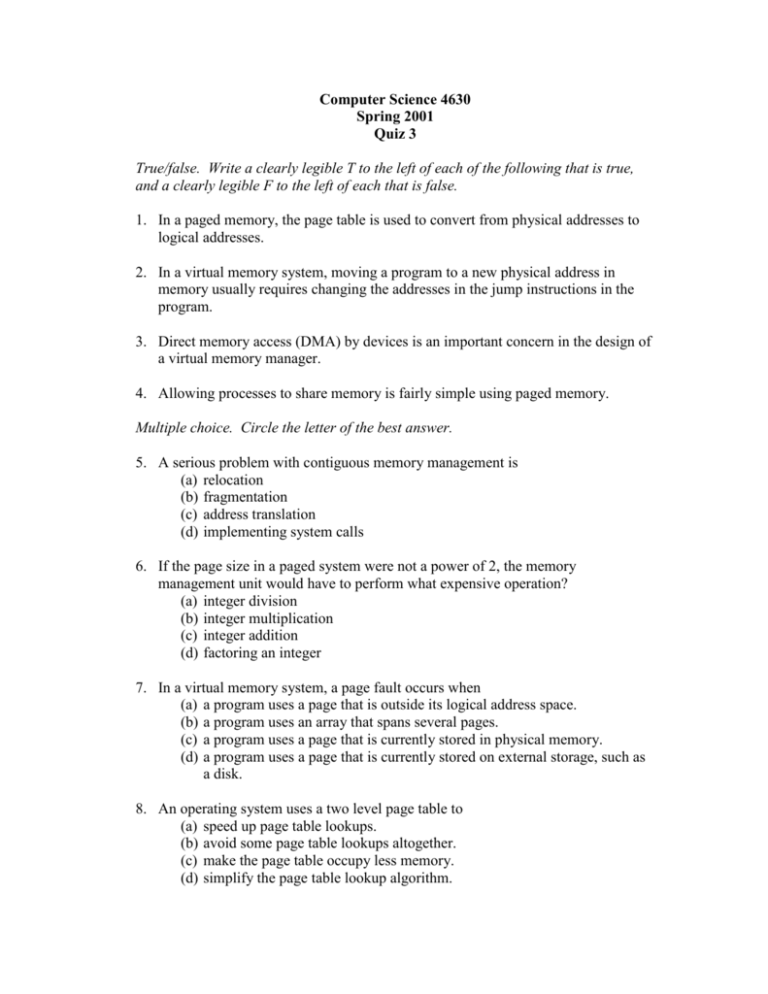
Computer Science 4630 Spring 2001 Quiz 3 True/false. Write a clearly legible T to the left of each of the following that is true, and a clearly legible F to the left of each that is false. 1. In a paged memory, the page table is used to convert from physical addresses to logical addresses. 2. In a virtual memory system, moving a program to a new physical address in memory usually requires changing the addresses in the jump instructions in the program. 3. Direct memory access (DMA) by devices is an important concern in the design of a virtual memory manager. 4. Allowing processes to share memory is fairly simple using paged memory. Multiple choice. Circle the letter of the best answer. 5. A serious problem with contiguous memory management is (a) relocation (b) fragmentation (c) address translation (d) implementing system calls 6. If the page size in a paged system were not a power of 2, the memory management unit would have to perform what expensive operation? (a) integer division (b) integer multiplication (c) integer addition (d) factoring an integer 7. In a virtual memory system, a page fault occurs when (a) a program uses a page that is outside its logical address space. (b) a program uses an array that spans several pages. (c) a program uses a page that is currently stored in physical memory. (d) a program uses a page that is currently stored on external storage, such as a disk. 8. An operating system uses a two level page table to (a) speed up page table lookups. (b) avoid some page table lookups altogether. (c) make the page table occupy less memory. (d) simplify the page table lookup algorithm. 9. In a virtual memory system, there is (a) one page table for the entire operating system. (b) one page table per process. (c) one page table per thread. (d) possibly several page tables for each thread. 10. Segmentation (a) provides better security by allowing the logical memory to be cut into segments that reflect the logical segments of a process. (b) is just another name for virtual memory. (c) is not compatible with virtual memory. (d) is almost never used on modern computers. 11. A page replacement algorithm that can be implemented without special hardware support is (a) the optimal algorithm. (b) the least-recently-used (LRU) algorithm. (c) the second chance algorithm. (d) the first-in-first-out algorithm. 12. Thrashing occurs when (a) a computer is running only compute bound processes. (b) a computer runs out of room in its process table. (c) a computer is performing a high number of page faults per second. (d) a computer is writing a large file to the disk, which prevents computebound processes from running. 13. A response to thrashing that an operating system can make and that sometimes stops the thrashing is (a) increasing the size of the page table. (b) reducing the number of processes in memory by swapping some processes out. (c) swapping in some compute-bound processes to reduce the frequency of disk accesses. (d) increasing the amount of disk space dedicated to virtual memory.
